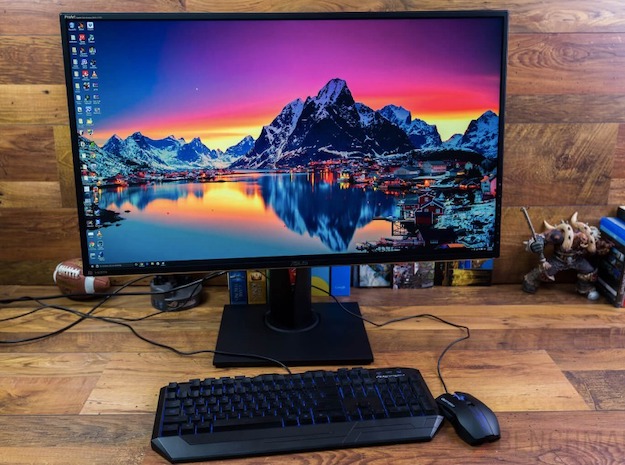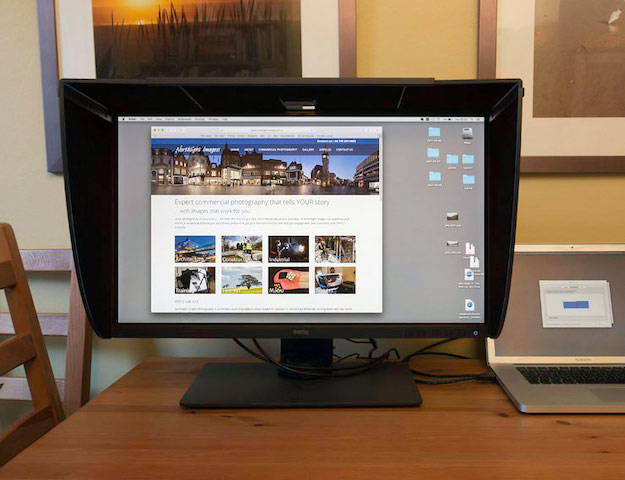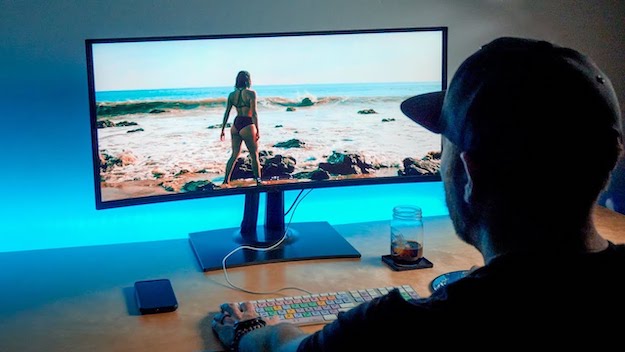Whether you are a creative professional or an enthusiast with a knack for the best picture and video quality, you need a monitor that will bring your creativity to life. It is crucial that you invest in the best monitor in the market.
One that is of high quality with a 4K resolution to give you color clarity and a full color spectrum. But choosing the best monitor for photo and video editing can be quite a daunting task.
There are tons of different brands in the market that are a bluff. To give you a kickback, we’ve scoured the market and compiled the best monitors for your photo and video editing needs. If you need monitors for gaming instead, check out this roundup list.
1. Asus PA 329Q

Asus PA 329Q happens to be one of the A-rated monitors for photo and video editing featuring a wide range of inputs. This 32-inch masterpiece boasts of a 4K resolution measuring 3840 by 2160 with different ports- mini display port, DisplayPort and 3 HDMI inputs.
It covers 99.5% of the Adobe RGB color gamut, 90% DCI-P3 and 100% sRGB. It features 6-axis and gamma adjustments with several pictures presets including sRGB, Adobe RGB, two user-customizable modes and Darkroom.
The ProArt Asus color calibration technology provides you with excellent uniformity and color accuracy more so when you need to match the color and brightness of your photos and videos to that of your monitor’s display.
With the settings being backed up on the internal IC chip of the monitor it allows you to access the color profiles with flexibility even if you’re switching between different devices. The design allows for flicker-free low blue light levels to protect your eyes when using the monitor for extended hours.
Pros:
• Real 10-bit color depth with 14 bit 3D LUT
• Factory calibrated at Delta E˂2
• Fully ergonomic support with abundant connectivity options
Cons:
• It lacks G-sync technology
• Relatively expensive
2. Ben Q SW271

Arguably the best 4k UHD Adobe RGB photo and video editing monitor, with outstanding technology and impressive editing performance to match Sony 4K computer monitors.
Ben Q SW271 features a true 10-bit IPS panel, 14-bit 3D LUT, 4k UHD, and HDR10 support. The monitor covers 99% Adobe RGB, it’s factory calibrated at Delta E≤ 2 and features 100% sRGB color gamut.
With this 14-bit (3D) LUT you have a large and wide color gamut than is possible with other 12-bit or smaller LUT systems.
Even though it supports HDR, it has a brightness peak limit of 350-nits and a contrast ratio of 1000:1 which won’t give you an immersive HDR viewing experience and is only ideal for editing.
This monitor is equipped with a hotkey puck device and a shading hood. It supports a set of features including picture presets such as Rec.709, Adobe RGB, DCI-P3, s RGB, Black & White, Darkroom and HDR, Gamut Duo (Dual view), three calibration profiles, DICOM, two custom profiles and also PiP and PbP modes.
Pros:
• 14-bit 3D LUT.
• Wide color gamut.
• Fully ergonomic stand with rich connectivity options.
• Factory calibrated at delta E ≤ 2.
Cons:
• The USB-C port only supports PD of up to 10w.
• Lacks free sync.
3. ViewSonic VP 2468

ViewSonic VP 2468 prides itself in being the best 24” IPS monitor for photo editing. This impressive monitor is an affordable choice for most 24” monitors and offers superior connectivity with a variety of ergonomic options.
It’s factory calibrated at Delta E ≤ 2 color accuracy so you can get it working in no time. It features a 14-bit 3D LUT with a 4.39 trillion color pallet for superior grayscale performance and color accuracy. It also supports an 8-bit color depth through dithering (2-bit FRC + 6-bit).
It features a built-in color uniformity function to make sure the colors and brightness are uniform across the entire screen at all times. It uses IPS (in-plane switching) panel technology to ensure accurate, high-quality colors and superior performance without using up a lot of power.
Pros:
• 3D 14-bit LUT.
• Fully ergonomic design with superior connectivity options.
• Robust set of features.
Cons:
• Lacks speakers.
• Resolution tops out at 1080p.
4. VIEWSONIC VP 3881

A professional monitor for creative professionals who want very accurate photos and videos.
If you want an impressive monitor for video editing, ViewSonic VP 3881 is your best solution. This factory calibrated monitor at delta E<2 covers Rec.709 and 100% sRGB color gamuts with a 10-bit depth and a 14-bit 3d LUT.
The gigantic 38” screen with a 3800X1600 pixels resolution provides you with the ideal pixel density of 110 PPI. It offers you clear and sharp graphics and plenty of workspace. It features HDR capability including a contrast ratio of 1000:1 and 300-nit peak brightness which is not very vivid.
The monitor comes with plenty of features including the PiP and PbP modes; gamma presets, advanced 6-axis color adjustments and dual color among others. You also get customizable profiles for photographers (portrait, photo, landscape, monochrome) and Designer (video edit, Animation, CAD/CAM) profiles.
The ViewSonic VP3881 prides itself of having future proof connectivity with a USB-6 port, a display port 1.4, a headphones jack, dual HDMI 2.0, two 5W built-in speakers, one upstream and three downstream USB 3.1 gen one port.
Pros:
• Rich pixel density.
• 14-bit 3d LUT.
• Adjustable design with superior connectivity options.
• Robust set of features.
Cons:
• HDR is only software enabled.
• Mediocre sound quality.
Final Thoughts
As an editor, you know how crucial it is to choose the best quality monitor for your creative work. The type of editing monitor you choose can mean life or death for your creativity. It is not only about the image quality but also the right color spectrum, the correct size, and ergonomic options to suit your editing needs.




